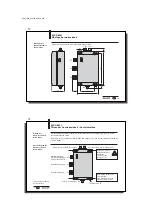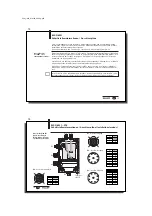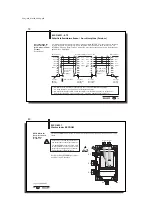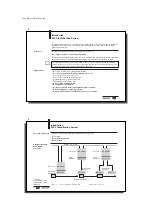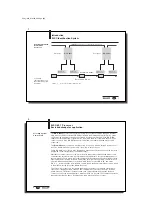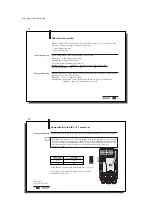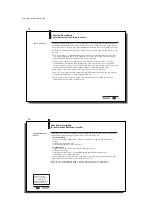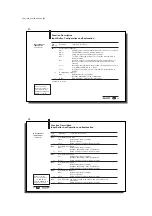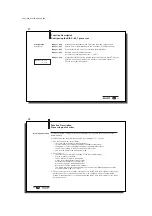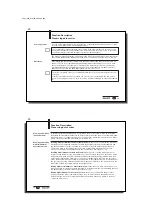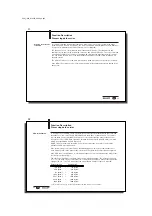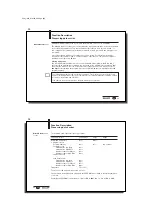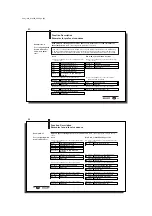
17
deutsch
17
E
Description of
Output buffer
(continued)
Sub-
Meaning
Function Description
address
01
Hex
Command designator
00
H
EX
No command present
01
H
EX
Read data carrier
02
H
EX
Write to data carrier
04
Hex
Configure processor
05
Hex
Read configuration data
06
H
EX
Store program in the EEPROM for the Mixed Data Access
function
07
H
EX
Store the start address for the Auto-Read function in the EEPROM
11
H
EX
Copying from Head 1 to Head 2
12
H
EX
Initialize the CRC_16 data check
21
H
EX
Read data carrier using Mixed Data Access function (correspond-
ing to the program stored in the EEPROM)
22
H
EX
Write to data carrier using the Mixed Data Access function
(corresponding to the program stored in the EEPROM)
or
Configuration 1st byte
00
Hex
Default value (factory setting).
Changes depending on the configuration.
or
Data
for writing to the data carrier
(continued next )
Function Description
Output Buffer, Configuration and Explanation
Please note the
basic procedure on
13 and 28...35
and the examples on
pages
36...55.
C60_1-023_819395_0508_en.p65
18
18
E
Description of
Output buffer
(continued)
Sub-
Meaning
Function Description
address
02
Hex
Start address
Address at which reading from or writing to the data carrier
begins.
(Low Byte)
(The Low Byte includes the address range from 0 to 255).
or
Start address
Address for the Auto-Read function, starting at which the data
(Low Byte)
carrier is to be read. The value is stored in the EEPROM. (The Low
Byte covers the address range from 0 to 255).
or
Program No
Number of the program to be stored in the EEPROM in
conjunction with command ID 06
Hex
for Mixed Data Access
function.
or
Program No.
Number of the program stored in the EEPROM for read or write
operations in conjunction with command ID 21
Hex
or 22
Hex
for the
Mixed Data Access function.
or
Configuration 2nd byte
80
Hex
Default value (factory setting)
Changes depending on the configuration.
or
Data
for writing to the data carrier.
(continued next )
Function Description
Output Buffer, Configuration and Explanation
Please note the
basic procedure on
13 and 28...35
and the examples on
pages
36...55.

